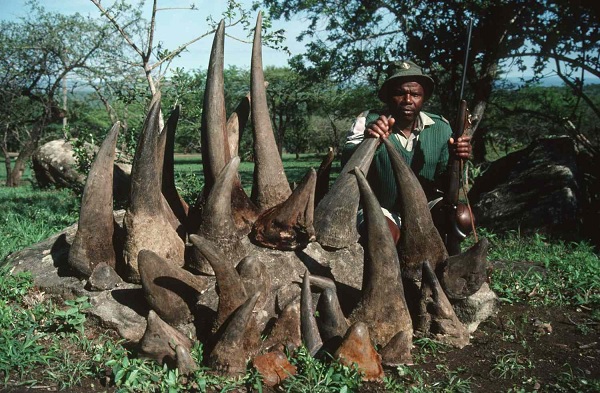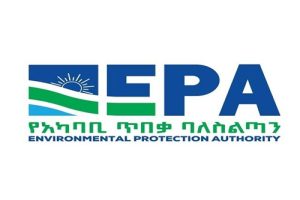
AU has made efforts to combat illegal wildlife trade and environmental degradation in Africa. Traditional poaching of endangered animals is wide spread as it is encouraged by alien dealers in colorful wildlife skins. As a result, wild animals in Africa are at risk of being near-extinct. Experts think that this is not a new incident across the continent.
Also, the row between conservationists, law enforcement agencies and African governments has been on the rise. These entities conduct digital monitoring and cooperate with wildlife protection agencies to protect endangered animals from becoming extinct. But, experts revealed that the hidden power of illegal traders is becoming obvious these days. They also point out that there is an ever increasing danger facing animals tracked by poachers.
The increase in population renders the wildlife to human encroachment and intrusion in their domain. Also, climate change makes the environment inhabitable for the wildlife in Africa, including Ethiopia. It is noted that protecting wildlife is becoming difficult in the continent. The killing and poaching of endangered animals show only one aspect of a complex illegal activity. The poaching zone stretches for thousands of miles from destination markets around the globe. Experts reveal that this global problem might be addressed by global solutions and a common strategy to poaching across the continent.
However, this strategy is exposed to difficult situations, including impoverished communities adjacent to wildlife reserves. These communities should deal with the dangers and destruction of wildlife in their environment.
The fight against wildlife poachers is on the rise as the battle is becoming increasingly high-tech. While wildlife park rangers protect endangered animals, there is also a destruction of illegal horns and skins confiscated from poachers.
As a result, the mortality rate for African wildlife has declined to low rates. In this regard, AU is the most effective body to address the illegal wildlife trade and has achieved some success in the past. It is still the organization that coordinates regional interactions with respect to endangered wildlife. It ensures that measures are taken by member states against illegal wildlife trade.
There is still concern that the assortment of national responses has complicated efforts to address the criminal activity on wildlife preserves. However, given the size of the problem, it is necessary to look for the most effective continental organization in Africa to address the issue of wildlife. The poaching of wildlife is not a new global dimension as it has its own history. It is an illegal activity across the world, including Africa.
In the past, it was demand by foreigners that fueled poaching for ivory trade. This illegal activity continued despite global efforts by global law enforcement agencies to stop and curtail the practice. Also, countries have taken steps to eliminate destination markets for poached wildlife. In this respect, to comprehend the intricacy of the problems facing the AU, it is necessary to understand the “string of illegal activity” linking poachers in Africa to markets around the world. In these markets the poached animals fetch high prices for those engaged in poaching circles.
Studies show that initially poaching begins as a problem focused on local conditions. These studies confirmed that poachers might come from villages nearby to game reserves. They come after confirming that the economic conditions of those locations are severe and people are poor. This situation is a great motivator for poachers to come near such locations. Poaching the animals needed by the black market is a way out of poverty for people residing within the local community.
In addition to local poverty, problems of corruption and ineffectiveness of law enforcement agencies may influence illegal practices like poaching. The sheer values of endangered wildlife will, therefore, become powerful motivators of black market and illegal activity from within the communities. This situation forces policy makers within the AU and its member states to design policies and programs for curbing poaching activities.
Studies reveal that poaching becomes an entrenched activity if markets exist for selling poached wildlife. These animals are killed for their skins and horns. African countries, which have a large share of the world’s wildlife, have been hit hard by illegal poachers. These poachers gather information on the depth of local poverty which serves them as the primary recruitment tool.
They also use the global illegal wildlife trade that provides them the final market for their poached animals. Studies reveal that African wildlife poaching levels compare with the depth of local poverty, national corruption and global price of illegal wildlife. However, most law enforcement agencies and scholars in the field have concluded that the largest markets for the illegal wildlife trade are in Asia. Demand for ivory, furs, animal skins, and bush meat has increased, leading to high demand for these items.
The market for poached wildlife is a complex one comprising several countries of the world. These countries have become focal points for endangered species of high value to poachers. Most of these countries are located in Africa, a continent where poachers are engaged in illegal wildlife trade. Whether through the illegal transportation and sale of wildlife, or the sale of their orphaned infants, poaching has become one of the most profitable criminal enterprises in the continent.
However, it is necessary to study the destination markets of poached wildlife that originate from African countries. These animals are hunted for their meat, bones, or skins as mentioned earlier. The local wild game which includes endangered species has been hunted by the local people for food and survival.
The local people look for the wildlife primarily for their meat with the skin, ivory and tusks value being only a byproduct for them. However, as some communities within Africa become affluent, they look for meat and mutton available in their villages. This tendency increased both prices and risks of instability for affected animals.
Whatever the factors that drive poachers to their career or the market, their hunted animals will be sold in the illegal wildlife trade is becoming broad. It crosses borders and becomes linked to a variety of markets in Africa. This has become a concern for the AU and it has taken actions for the protection of wild games. It has taken measures to halt the illegal wildlife trade.
However, the pervasive nature of the illegal wildlife trade and poaching across Africa, including Ethiopia, has prompted strong responses from around the world and from both nations and global organizations alike. However, when it comes to resolving the issue of African wildlife, the AU is well placed with a large membership in the continent. It is also ready to facilitate associations with global agencies concerned with ending the illegal wildlife trade. It is engaged in the facilitation of cooperation between member African states. Initially, it has provided a strong partnership for the groups endeavoring to stop the illegal wildlife trade throughout Africa.
International organizations, including the UN are major partners with the AU in combating illegal wildlife trade in Africa. They also contribute to the prevention of environmental degradation in cooperation with concerned agencies and African governments. In so doing, they deal with policy issues such as development, public health and education in the prevention of poaching and environmental degradation.
Furthermore, the AU has had success in interacting with the non-profit organizations on the African continent. Experts are of the opinion that much of this interaction between the AU and non-profits organizations does not fully address the illegal wildlife trade specifically. However, they address issues related to development, health, education, and corruption which are factors that partially impact poaching activity throughout Africa. There is a chance for the AU to interact with non-profit organizations which are indirectly concerned with the activity of the illegal wildlife trade.
The partnerships with non-profit organizations can be an advantage for the AU. They strengthen coordination activities within it which serves as a forum for continental issues. They also offer the opportunity for coordination for African nations facing problems of illegal wildlife trading. In this regard, experts think that the AU has major roles to play in dealing with the illegal wildlife trade by serving as a forum for coordination and cooperation. Also, it offers alternative approach for development, thereby providing an instrument for addressing corruption within Africa.
AU works as an entity in which member states can interact jointly on a number of issues together. But those joint interactions may not always be successful in designing relevant policy. Experts think that the AU may address issues like the illegal wildlife trade through “bilateral” negotiations and coordination rather than multilateral policy discussions. Each country affected by poaching of wildlife may be successful in designing and implementing relevant policy and program in cooperation with the AU.
It may be possible for African countries to agree to specific treaty that is relevant to their situation. This enables AU to combat the illegal wildlife trade at least within some of the member states. However, one of the primary tasks of the AU has been to promote economic development throughout Africa. But, given the level of poverty that pushes individuals into the illegal wildlife trade, development of rural areas that create employment and raise incomes may be strong factors to reduce poaching. Also, this development reduces the attractions and ability of illegal firms that recruit new poachers.
Luckily, when it comes to developing the African economy and creates employment and income, AU has good records of creating agencies across the continent that focus on improving economic conditions across the continent. African countries, including Ethiopia cooperate with AU in its efforts to reduce unemployment and poverty in the continent.
BY GETACHEW MINAS
THE ETHIOPIAN HERALD WEDNESDAY 25 JUNE 2025




